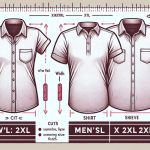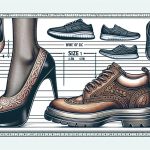Do you love wearing scarves but wonder about their purpose beyond fashion? Scarves have a rich history and practical uses beyond just adding a stylish touch to your outfit.
In this article, we will explore the fascinating world of scarves and their various uses. First, let’s delve into the history of scarves. Scarves originated in ancient Rome, where they were worn by men as a symbol of rank and status.
Over time, scarves became more popular among women and were used for practical purposes such as keeping warm in cold weather. Today, scarves are a staple fashion accessory and can be found in a wide range of materials, patterns, and styles.
But their uses go beyond just fashion, as scarves can also serve practical purposes such as protection from the sun, wind, and dust. Join us as we delve further into the world of scarves and their many uses.
Table of Contents
A Brief History of Scarves
You’re probably wearing a scarf right now without even realizing the rich history and cultural significance behind it. Scarves date back to ancient Rome, where they were known as sudariums, or sweat cloths. These were used by men to wipe their faces and necks in hot weather.
Later, they were adopted by women in the Middle East as a way to cover their heads and faces for religious reasons. In the 17th century, scarves became fashionable accessories for men. The French military began wearing silk scarves, known as cravats, as part of their uniforms. This trend quickly spread throughout Europe, and soon scarves were seen as a symbol of wealth and status.
Women also began wearing scarves, often made of delicate fabrics like lace and silk. Today, scarves are worn for both practical and fashion purposes. They can keep you warm in cold weather, protect your skin from the sun, and add a pop of color or texture to an outfit.
Scarves also hold cultural significance in many parts of the world, such as the keffiyeh worn by Palestinian and Arab men as a symbol of their identity and resistance. Whether you wear a scarf for function or fashion, it’s clear that this versatile accessory has a long and fascinating history.
Fashion Accessories
Fashion accessories are a fantastic way to elevate any outfit, and there are countless options available to add a touch of sophistication to your look.
Scarves, in particular, are a versatile and stylish accessory that can be worn in a variety of ways. From classic silk scarves tied around the neck to oversized blanket scarves draped over your shoulders, there are endless possibilities to add a little extra flair to your outfit.
One of the great things about scarves is that they come in a range of materials, colors, and patterns, making them a perfect accessory for any season. In the winter months, a cozy wool scarf can keep you warm, while in the summer, a lightweight cotton scarf can add a pop of color to your outfit.
Floral, geometric, and animal prints are just a few of the many patterns available, allowing you to express your personal style and add a unique touch to even the simplest outfit.
Another benefit of scarves is their ability to transform an outfit from day to night. A simple pair of jeans and a t-shirt can be instantly elevated with the addition of a statement scarf. Whether you choose a bold, colorful print or a subtle, understated design, a scarf can take your look from casual to chic in seconds.
So, next time you’re looking to add a little something extra to your outfit, consider reaching for a scarf – you won’t regret it!
Practical Uses
When it comes to practical uses for scarves, there are a few key points to consider.
First and foremost, scarves can provide protection from the elements, whether it’s shielding your face from the wind or keeping your neck warm on a chilly day.
Additionally, scarves may hold religious or cultural significance for some individuals, representing their beliefs or traditions.
Finally, in emergency situations, a scarf can serve as a makeshift bandage or sling.
So next time you reach for a scarf, remember its versatility beyond just as a fashion accessory.
Protection from the Elements
Scarves can be a versatile accessory for staying warm and protected from harsh weather conditions. Whether you’re facing freezing temperatures, strong winds, or heavy rain, a scarf can help shield your neck and face from the elements.
This is particularly important in winter, when the cold air can dry out your skin, irritate your throat, and even make it harder to breathe. When choosing a scarf for protection from the elements, look for one that is long enough to wrap around your neck several times, and thick enough to provide insulation.
Wool, cashmere, and synthetic materials like acrylic are all good options, as they are warm, soft, and moisture-wicking. You may also want to consider scarves with hoods or built-in face masks, which can offer additional protection from wind and snow.
With the right scarf, you can stay comfortable and cozy, no matter what the weather brings.
Religious and Cultural Significance
It’s fascinating to learn about the religious and cultural significance attached to these beautiful accessories. Scarves have been used for centuries as symbols of faith, often worn by individuals as a sign of their religious affiliation.
Here are three examples of how scarves are used in different cultures and religious practices:
-
In Islam, the hijab is a traditional headscarf worn by women to cover their hair and neck. It’s seen as a sign of modesty and a way to show devotion to Allah. The hijab comes in a variety of styles and colors, and it’s often paired with other clothing items such as abayas and niqabs.
-
In India, the dupatta is a long scarf worn by women as a part of traditional dress. It’s often draped over the head and shoulders, and it can be made from a variety of fabrics such as silk, cotton, or chiffon. The dupatta is seen as a symbol of femininity and grace, and it’s often decorated with embroidery or other embellishments.
-
In Judaism, the tallit is a prayer shawl worn by men during morning prayers. It has four corners, each with fringes called tzitzit attached to them. The tallit is meant to remind the wearer of the commandments in the Torah, and it’s often passed down from generation to generation as a family heirloom. It can be made from wool, cotton, or silk, and it’s available in a variety of colors and sizes.
Emergency Uses
One important aspect of scarves is their versatility in emergency situations, making them a useful item to keep on hand. In addition to keeping you warm, scarves can serve a variety of functions when you find yourself in a pinch. Here are just a few examples:
| Situation | How a Scarf Can Help |
|---|---|
| First Aid | Use a scarf as a makeshift bandage or tourniquet |
| Fire Safety | Wrap a scarf around your face to filter out smoke and debris |
| Self-Defense | Use a scarf as a whip-like weapon to fend off attackers |
| Survival | Use a scarf to carry items, create a shelter, or signal for help |
As you can see, a scarf can be a valuable tool in a variety of emergency situations. Keeping one in your car or bag can provide peace of mind and potentially even save your life. So next time you’re packing for a trip or just heading out for the day, consider bringing along a trusty scarf.
Scarves in Different Cultures
You’ll be amazed at the diverse ways different cultures incorporate scarves into their daily lives, adding a unique touch of style and tradition to their wardrobes.
In India, the dupatta is a long, flowing scarf that is draped over the head and shoulders of women. It’s often made of silk or cotton and used as a religious or cultural symbol, as well as a fashion accessory.
In colder regions, the shawl is a popular scarf option, worn by both men and women to keep warm and add a pop of color to their outfits.
In the Middle East, the keffiyeh, also known as a shemagh, is a traditional scarf worn by men. It’s typically made of cotton and features a checkered pattern, with red and white being the most common colors. The keffiyeh is worn around the head and neck to protect against the sun and sand and has become a symbol of Palestinian nationalism and resistance.
In Scotland, the tartan scarf is a staple accessory, worn by both men and women as a symbol of their clan or family. The tartan pattern is unique to each clan, and the scarf is often worn as a part of traditional dress for events such as weddings, funerals, and Highland games. Today, the tartan scarf has become a popular fashion statement, with designers incorporating the classic pattern into modern pieces.
Overall, scarves play an important role in cultural traditions and fashion around the world. From India to Scotland to the Middle East, scarves are more than just a fashion accessory – they’re a symbol of identity, heritage, and tradition.
Scarves in Art and Media
Get ready to be inspired by the creative ways that artists and media outlets have incorporated scarves into their works, adding a touch of elegance and flair to their designs. Scarves have been used in art and media for centuries, becoming an iconic accessory that can transform a simple outfit into a statement piece.
From paintings to films, here are just a few examples of how scarves have been used in the creative world.
-
In paintings, scarves have been used to add texture and movement to a piece. Artists have used scarves to create a sense of wind or motion, adding depth and interest to their works. Some famous examples of scarves in paintings include Gustav Klimt’s ‘The Kiss’and Johannes Vermeer’s ‘The Girl with the Pearl Earring.’
-
Scarves have also been used in fashion photography to create a sense of movement and drama. Photographers have used scarves to add a pop of color or to create a sense of flow, making the photos more dynamic and visually interesting. Some famous examples of fashion photography featuring scarves include Richard Avedon’s iconic portraits and Helmut Newton’s avant-garde fashion shoots.
-
Scarves have also been used in films to add a touch of elegance and sophistication to the characters’ wardrobe. In classic Hollywood films, leading ladies often wore scarves to add a touch of glamour to their outfits. Some famous examples of scarves in films include Audrey Hepburn’s iconic black and white scarf in ‘Breakfast at Tiffany’s’and Grace Kelly’s silk scarf in ‘Rear Window.’
Whether used in paintings, fashion photography, or films, scarves have become a timeless accessory that can add a touch of elegance and flair to any creative work. So, the next time you’re looking for inspiration, consider incorporating a scarf into your own art or media project.
Sustainability and Scarf Production
If you’re interested in sustainability, you’ll be happy to know that there are eco-friendly scarf materials available. Bamboo, organic cotton, and recycled materials are just a few examples.
Additionally, fair trade scarf production ensures that those who make the scarves are treated fairly and receive a fair wage.
Eco-Friendly Scarf Materials
Using sustainable and eco-friendly materials for scarves, such as organic cotton or recycled polyester, is becoming increasingly important in the fashion industry. Not only do these materials help reduce waste and pollution, but they also have a lower impact on the environment during production.
To give you an idea of the impact of using eco-friendly materials, take a look at the table below:
| Material | Benefits |
|---|---|
| Organic cotton | Grown without harmful pesticides and chemicals, promotes biodiversity, reduces water usage |
| Recycled polyester | Reduces waste in landfills, uses less energy and water to produce, can be recycled again |
By choosing scarves made from these materials, you are not only contributing to a more sustainable fashion industry, but also supporting companies that prioritize ethical practices and environmental responsibility. So next time you purchase a scarf, consider the materials used and the impact it has on the planet.
Fair Trade Scarf Production
When you purchase a fair trade scarf, you can see the positive impact it has on the people and communities involved in its production. Fair trade ensures that the workers who produce the scarf are paid a fair wage and work in safe conditions. This means that the workers are able to support themselves and their families, and have access to education and healthcare.
Fair trade also promotes gender equality by providing equal opportunities and fair treatment to both men and women.
In addition to supporting the workers, fair trade also benefits the environment. Fair trade production methods prioritize sustainable and eco-friendly practices, such as using natural dyes and organic materials. This reduces the amount of harmful chemicals released into the environment, and promotes the conservation of natural resources.
By purchasing a fair trade scarf, you’re not only getting a high-quality product, but you’re also contributing to a better world for everyone involved.
- What Is Viscose/Rayon Crepe? the Sustainable & Drapey Option - June 23, 2025
- Scuba Crepe vs. Regular Crepe: Understanding the Key Differences - June 23, 2025
- Exploring Wool Crepe: The Perfect Fabric for Tailored Suits and Dresses - June 23, 2025






